Cleanse, moisturize and protect: how to start a skincare routine
1. Introduction: Why a Basic Skincare Routine Matters
- Skincare involves both health care and self-care.
- Nowadays, skincare is more than just cosmetics; it’s an essential component of your self-care and health regimen in a world when stress, pollution, and screen time rule everyday life.
- Basic Skincare Routine The largest organ in your body, your skin serves as a barrier to keep out hazardous microorganisms, UV rays, environmental pollutants, and external irritants. Ignoring it is the same as ignoring your general health.
- According to scientific research, regular skincare helps stop premature aging, lower inflammation, and preserve the skin’s natural barrier function—all of which are vital for immune response.
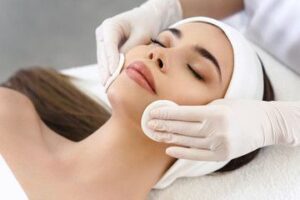
- Maintaining a skincare regimen improves mental wellness on a psychological level. Daily routines such as washing your face or using moisturizer can help lower anxiety and elevate your mood, according to behavioral health study.
- Many people find that this peaceful practice turns into a mindfulness exercise that allows them to take a minute to reflect, connect with themselves, and develop self-discipline.
- In addition to promoting healthier skin, a well-chosen routine increases self-esteem and gives one a sense of control in an otherwise chaotic world.
- Skincare is for everyone, whether you’re a busy professional coping with everyday pollution, an adolescent with acne, or someone who wants to age gracefully. And the first step is realizing that healthy skin, not flawless skin, is what excellent skin is.
- Overcomplicating Things? Start with the Basics
- Because of the abundance of skincare products, influencers, and constantly changing trends, skincare has become daunting. Acids, peels, niacinamide, retinol, and K-beauty regimens with ten or more steps—it’s no wonder why people quit before they’ve even begun.
- The truth is that you may attain healthy, radiant skin without following a 12-step regimen. What you require is a reliable and efficient strategy that balances oil production, fortifies your skin barrier, and guards against harm.
- Dermatologists concur that all skin types, all ages, and all genders can benefit from a simple skincare regimen that consists of three key steps: washing, moisturizing, and protecting (with SPF). These principles are effective because they promote the natural processes of your skin.
- Beyond that, it is optional and should only be customized when your skin actually requires it, not just because social media dictates it.
- Additionally, if you’re a novice, a streamlined method lowers the chance of discomfort, allergic reactions, and product overload.
- Actually, using too many active ingredients at once might damage your skin’s protective layer, resulting in flaking, redness, or breakouts. Less is more, particularly at the beginning.
- These 3 Steps Work for All Genders and Skin Types
- Skincare is not gendered, unlike what many people think. The fundamental requirements of every person’s skin are the same: removing debris and oil, moisturizing to keep equilibrium, and protecting against UV rays.
- The basic three processes are the same regardless of whether you have oily, dry, combination, sensitive, or acne-prone skin; the only things that vary are the product textures and ingredients.
- Cleansers: While dry skin types may benefit from creamy, moisturizing choices, oily skin types may benefit from gel-based cleansers.
- Moisturizers: For people with acne, moisturizers can be light and oil-free; for dry or mature skin, they can be heavier.
- sunscreens: Broad-spectrum sunscreens with an SPF of 30 or higher should be offered in formulas that suit various skin tones and preferences.
2 Step 1: Cleansing – The First Essential Step
What Cleansing Actually Does to Your Skin
- For good reason, cleansing is the first step in any skincare regimen. Cleaning your face is only one aspect of it; another is getting your skin ready for everything that comes next.
- Basic Skincare Routine Makeup, dead skin cells, sweat, excess oil, accumulated filth, and toxins from the environment that accumulate on your skin during the day or night are all eliminated by a thorough cleansing.
- If not eliminated on a regular basis, these contaminants can clog pores, lead to breakouts, create inflammation, and dull your complexion.
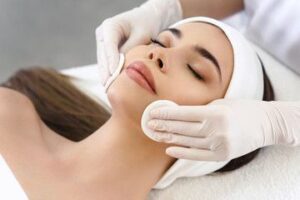
- According to dermatology, washing helps the skin’s natural barrier, the acid mantle, which protects against germs, UV radiation, and environmental aggressors, as well as restoring the pH balance of the skin.
- To let your skin breathe and better absorb the active compounds in your moisturizers, serums, and treatments, think of washing as pressing the reset button.
- Even the best skincare products won’t penetrate well without a clean canvas, wasting product and producing unimpressive effects.
- Cleaning correctly is therefore one of the most scientifically supported strategies to enhance skin health and avoid long-term damage, even if it could appear like the easiest step.
- How to Choose the Right Cleanser
- Using the incorrect cleaner can cause more harm than good because they are not all made equal. The ideal cleanser is one that efficiently removes pollutants from your skin while honoring its natural oils. Here are some tips for choosing the best formula for your skin type:
- Oily or Acne-Prone Skin: Choose gel-based or foamy cleansers that contain chemicals like niacinamide, tea tree oil, or salicylic acid if you have oily or acne-prone skin. Without unduly drying out the face, these aid in pore unclogging, lowering sebum production, and preventing acne.
- Dry or Dehydrated Skin: The best cleansers are cream-based or moisturizing and contain hyaluronic acid, ceramides, or glycerin. These keep the skin from becoming flaky or tight when cleaning it.
- Sensitive skin: Choose non-foaming, sulfate-free, and fragrance-free cleansers if you have sensitive skin. Gentle milk cleansers or micellar water are frequently well accepted and lower the chance of redness or irritation.
- Your regimen may be made or broken by the texture and formulation you choose, and patch testing new cleansers is always preferable, particularly if you have reactive skin.
- Morning vs. Night Cleansing
- Cleaning twice a day is a scientifically supported recommendation, not a myth. Sweat, oil, and any leftover skincare product residue are eliminated by morning cleaning. Additionally, it prepares the skin for daytime hydration and SPF.
- Cleaning in the evening is even more important. It removes pollution, sunscreen, makeup, and the dirt your skin accumulates over the day. Consider double cleansing if you wear makeup or have a high SPF. Use an oil-based cleanser or micellar water to remove makeup first, then your usual cleanser to get a deeper clean.
- One of the worst habits for the long-term health of your skin is skipping night washing, which can result in breakouts, dull skin, and even premature aging.
- Cleansing Mistakes to Avoid
- When used improperly, even the best cleaner might lose its effectiveness or cause harm. Typical errors include:
- Over Washing: too frequently can deplete the skin’s natural oils, causing dryness, irritation, or even an increase in oil production as your skin tries to make up for it.
- Using hot water: Although it may seem soothing, hot water weakens your skin’s protective layer and can make you more sensitive or red. Always cleanse gently with lukewarm water.
- Face wipes or harsh scrubbing: Physical aggressiveness on the skin can cause inflammation, microtears, and damage to the skin’s barrier over time. Steer clear of abrasive scrubs, rough washcloths, and alcohol-based wipes.
3. Step 2: Moisturizing – Lock in the Hydration
Why You Need a Moisturizer Even if Your Skin Feels Oily
- The idea that oily or acne-prone skin doesn’t require a moisturizer is one of the most widespread misconceptions about skincare. In practice, it can be detrimental to omit this step.
- The skin may react by creating even more oil to make up for the feeling of being stripped or dry, which is frequently brought on by harsh cleansers or excessive washing. An unbalanced, oily complexion is the result of this extra oil clogging pores and causing outbreaks.
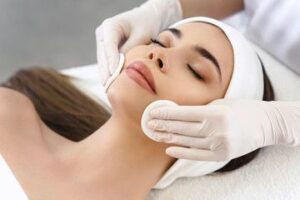
- The purpose of moisturizers is to add hydration and seal it in, not to add oil. According to science, your skin requires both lipids and water to function correctly.
- In order to keep your skin barrier strong, elastic, and impervious to irritation or infection, moisturizers aid in maintaining this equilibrium.
- A moisturized skin barrier is more capable of self-healing, fending off external stressors, and more efficiently absorbing the active chemicals in other skincare products.
- A good moisturizer keeps your skin plump, smooth, and healthy by preventing trans-epidermal water loss (TEWL), the silent thief of hydration, regardless of how dry, oily, or in between your skin type is.
- How to Pick the Right Moisturizer:
- Depending on your skin type, climate, and skin concerns, you can choose from a variety of moisturizers, including gels, creams, and lotions:
- Gel-Based Moisturizers: These are water-based, lightweight, and absorb quickly. Particularly in humid regions, they are perfect for skin types that are oily, prone to acne, or combination. Gels provide moisture without blocking pores or making the skin feel oily.
- Cream-Based Moisturizers: Ideal for dry, aged, or dehydrated skin, creams have a richer, thicker texture. Ideal for colder, drier seasons, they offer deep nourishment and form a barrier that keeps moisture in.
- Lotions: Ideal for mixture skin or typical skin types that require basic hydration, lotions are a bit richer than gels but lighter than creams. During the day, they work well for layering under makeup.
- You might need to switch up your moisturizer if your skin is greasy in the summer and dry in the winter. Additionally, if you have acne, use non-comedogenic formulas.
- Ingredients to Consider
- The components of effective moisturizers are more important than their ostentatious packaging. Seek out humectants, barrier-repairing agents, and hydrators that are supported by dermatological research:
- Hyaluronic Acid: A humectant that draws water into the skin and retains up to 1000 times its weight in moisture is hyaluronic acid. It moisturizes, plumps, and smoothes all skin types.
- Glycerin: Another potent humectant, glycerin keeps the skin supple and soft by attracting moisture from the surroundings and preventing pore blockage.
- Ceramides: The skin naturally contains lipid molecules called ceramides. They prevent dryness, irritation, and sensitivity by strengthening and repairing the skin barrier, which is crucial for aged or impaired skin.
- How and When to Apply
- Technique and timing are just as important as the final output. When your skin is still a little wet after cleansing, that is the ideal moment to apply a moisturizer. This improves absorption by retaining the water that is already on the skin.
- Apply the cream lightly with clean fingertips in upward, outward strokes to promote lymphatic drainage and avoid straining. Remember to take into account your neck and décolletage, which are sometimes overlooked but age similarly to your face.
- You can moisturize twice a day: once at night to promote overnight repair and once in the morning to prepare your skin for the day. In summary, moisturizing is necessary to protect, balance, and future-proof your skin; it is not an option.
4. Step 3: Protecting – The Power of Sunscreen
Why Sunscreen Is Non-Negotiable;
- Dermatologists worldwide concur that if you could only use one skincare product for the rest of your life, it would be sunscreen.
- Sunscreen serves as a daily defense against the sun, which is the most harmful external factor. It is not merely a cosmetic product. Clouds, glass, and even the deeper layers of your skin are susceptible to ultraviolet (UV) radiation, which can result in a series of long-term harm.

- Sunburn, hyperpigmentation, fine lines, wrinkles, and sagging skin are all symptoms of premature aging that can result from frequent, unprotected sun exposure.
- More importantly, however, UV damage is the leading cause of skin cancer, including potentially fatal melanoma. The World Health Organization claims that UV rays are responsible for 80% of noticeable skin aging.
- Daily use of sunscreen preserves even skin tone, lowers the risk of skin illnesses, and protects the collagen in your skin, even when you’re indoors or during the rainy season. Like brushing your teeth, it is an unbreakable habit rather than a one-time purchase.
- Physical vs. Chemical Sunscreens
- Knowing the differences between chemical and physical (mineral) sunscreens enables you to select one that is comfortable and meets the demands of your skin.
- Physical sunscreens: These are applied to the skin’s surface and act as a mirror to reflect UV rays. Two essential components are naturally occurring minerals, titanium dioxide and zinc oxide. Physical sunscreens function instantly after application and are less likely to irritate skin, making them perfect for sensitive or acne-prone skin types. They may, however, leave a white cast, particularly on darker complexion tones.
- Chemical sunscreens: These penetrate the skin and transform UV radiation into heat, which the skin then exhales. Commonly used ingredients include oxybenzone, octocrylene, and avobenzone. Chemical sunscreens are perfect for everyday use and under makeup because they are usually lighter, blendable, and invisible. However, some people with reactive skin may become sensitive to them.
- Both kinds are now combined in many contemporary formulae for the best wearability and protection.
- Choosing the Right SPF
- The Sun Protection Factor, or SPF, measures how well a sunscreen blocks UVB rays, which can lead to sunburn and skin cancer. Dermatologists advise regular usage of sunscreen with an SPF of 30 or higher, which blocks around 97% of UVB radiation. Water-resistant formulations and SPF 50 are better options if you’ll be swimming, sweating, or spending a lot of time outside.
- Selecting a broad-spectrum sunscreen that offers protection from both UVA and UVB rays is equally crucial. Whereas UVB rays harm the skin’s surface and result in burns, UVA rays penetrate deeper and cause aging and long-term skin damage.
- Avoid using SPF-containing moisturizers or makeup as your only line of defense because they are frequently insufficient and may not be applied in large enough quantities.
- How and When to Apply
- Every morning, whether it’s raining or shining, inside or out, you should use sunscreen as the last step in your skincare routine, immediately after moisturizer. For only your face and neck, use at least half a teaspoon, or two fingers’ worth.
- Reapply every two to three hours if you’re outside, especially after wiping your face or perspiring. Over time, sunscreen wears off, leaving your skin susceptible if you neglect to reapply it.
- Make it a morning ritual, similar to locking your door or brushing your hair. The least expensive investment you’ll ever make in skin health and anti-aging is sunscreen.
5. Common Myths About Skincare Routines
- There is skincare advice everywhere, from advertising and influencers to well-meaning friends. However, not all of it is supported by science.
- You risk damaging your skin, wasting money, and becoming annoyed if you fall for common skincare fallacies. Let’s dispel three of the most damaging skincare fallacies that frequently prevent people from developing a well-rounded, productive routine.
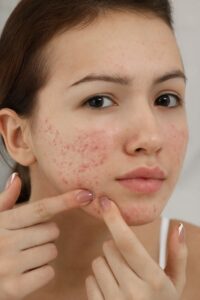
- Oily Skin Doesn’t Need Moisturizer
- One of the most pervasive and harmful skincare myths is this one. It makes sense: why add extra oil if your skin is already producing it? However, this misconception mixes up moisture and oiliness.
- Lack of water, not oil, can cause dehydration in oily skin. Your skin may react by creating extra oil to make up for the harsh cleansers you use or by skipping moisturizer, which will exacerbate breakouts and shine. The skin is balanced, the barrier is strengthened, and excessive sebum production is avoided with a well-formulated moisturizing, oil-free moisturizer.
- For oily and acne-prone skin, dermatologists suggest gel-based moisturizers containing glycerin or hyaluronic acid. Without blocking pores, they moisturize. Regardless of your skin type, keep in mind that moisturized skin is healthy skin.
- You Don’t Need Sunscreen Indoors
- A common misconception is that sunscreen is only required while one is outside or in direct sunlight. However, UVA rays, which cause DNA damage and skin aging, can pass through glass, including windows in your house or place of business.
- UV rays are present and silently harming your skin, even on overcast or wet days. This unprotected exposure causes uneven tone, wrinkles, pigmentation, and occasionally skin cancer over time. Even while spending most of their time indoors, people who wear sunscreen every day exhibit noticeably less aging than those who don’t, according to clinical studies.
- To put it briefly, wearing sunscreen every day is required. Even if you work from home, apply a modest, broad-spectrum SPF 30+ every morning.
- More Products = Better Results
- Skincare is not about numbers. To see results, you don’t need a shelf full of items; in fact, employing too many products at once frequently backfires.
- Without knowing how they work together, layering different active ingredients such as retinoids, AHAs, BHAs, vitamin C, and exfoliants can damage your skin’s protective layer and result in irritation, breakouts, or even chemical burns. Known as “over-exfoliation” or “product overload,” this condition is growing more widespread as influencer-led skincare techniques gain traction.
- Particularly for novices, a simple, regular practice is frequently safer and more successful. Begin by cleansing, moisturizing, and protecting. Always patch test first, and only add active ingredients once your skin has stabilized and you have particular issues like aging, pigmentation, or acne.
- The Bottom Line:
- It is best to base skincare decisions on evidence-based procedures rather than fads. Don’t allow false information to undermine your work. The greatest strategy for long-term outcomes is to understand your skin’s needs and stick to a straightforward, reliable, and scientifically supported routine.
- Skincare is about progress and protection, not perfection. And the first step to developing healthier, more intelligent habits is dispelling these beliefs.
6. When to Add More Steps (Optional Extras)
- For most people, a simple skincare regimen consisting of cleansing, moisturizing, and protecting is sufficient to keep their skin balanced and healthy.
- However, you might think about using focused products to improve results as you learn more about the demands of your skin or if you start to worry about particular issues like acne, dullness, or early aging.
- These extra actions are optional, not required, and ought to be carefully added one at a time, according to the particular needs of your skin.
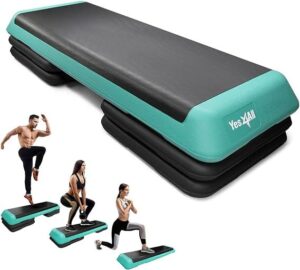
- Dead skin cells that build up on the skin’s surface and cause dullness, plugged pores, and uneven texture can be removed via exfoliation. It facilitates improved serum and moisturizer absorption and increases cell turnover. There are mostly two kinds:
- Scrubs with tiny particles are examples of physical exfoliants. These are frequently not advised for delicate or acne-prone skin because they might be abrasive.
- Chemical exfoliants: BHAs, such as salicylic acid, and AHAs, such as glycolic or lactic acid, break down dead cells without scraping. Over time, they become kinder and more efficient.
- Depending on your skin type, dermatologists advise exfoliating one to two times a week. Excessive use might erode your skin’s protective layer and result in irritation, redness, or breakouts.
- Toner – Optional for Balancing pH
- Toners were first developed to restore the pH balance of the skin following the use of harsh alkaline soaps. Some people still benefit from toners even though current cleansers are pH-balanced, particularly those with oily, acne-prone, or congested skin.
- The toners of today can provide other advantages:
- Hydrating toners: After cleansing, hydrating toners that contain glycerin, hyaluronic acid, or rose water help restore moisture.
- Clarifying toners; Shine and pores can be reduced with clarifying toners that contain niacinamide or witch hazel.
- Although it’s not necessary, a toner can be a welcome change of pace between cleaning and serum application if you like it and it works for your skin.
- Serum – When Targeting Specific Issues
- Concentrated compositions called serums are made to address particular skin issues like dryness, fine wrinkles, pigmentation, and acne. Usually applied immediately after toner (or cleaning, if you omit toner) and before moisturizing, they are lightweight and quickly absorbed.
- Typical constituents in serums include:
- Vitamin C for pigmentation and brightness.
- Niacinamide for redness, oil management, and acne.
- Retinol for cell regeneration, acne, and fine wrinkles.
- For intense hydration, use hyaluronic acid.
- Patch testing and introducing only one new serum at a time are recommended due to the strong active ingredients they contain. Certain active compounds, such as vitamin C and retinol, can aggravate sensitive skin or interfere with other components.
- Eye Cream – If You Have Concerns Like Puffiness or Dark Circles
- Because the skin surrounding your eyes is thinner and more sensitive than the rest of your face, fine wrinkles, puffiness, and dark circles are more likely to appear there. A useful addition if you’re struggling with these problems is an eye cream.
- Seek out:
- caffeine to lessen circles under the eyes and puffiness.
- To smooth fine wrinkles, use retinol (at a low concentration) or peptides.
- Lighten dark circles with niacinamide or vitamin K.
- Using your ring finger, which exerts the least pressure, apply eye cream lightly. To prevent stretching the skin, tap rather than rub.
7. Final Thoughts: Start Simple, Stay Consistent
Don’t Chase Trends — Build a Routine That Works for You
- It’s simple to feel overwhelmed and confused of where to start in a world full of skincare products, viral routines, and influencer endorsements. In actuality, having flawless skin takes time and doesn’t happen with every popular product. It is gradually developed using items that are tailored to your unique skin type, goals, and lifestyle.
- Skincare is a personal matter. It’s acceptable if what works for your best buddy or your favorite YouTuber doesn’t work for you. Knowing your individual skin type—oily, dry, reactive, or combination—is where the true power is. Does it require pigmentation management, barrier restoration, or hydration?

- Skincare is a personal matter. It’s acceptable if what works for your best buddy or your favorite YouTuber doesn’t work for you. Knowing your individual skin type—oily, dry, reactive, or combination—is where the true power is. Does it require barrier repair or hydration?
- From 10-step Korean procedures to skin cycling, slugging, and glass skin, trends will come and go. However, basic skincare techniques like washing, moisturizing, and protecting are always in trend. These three actions are ageless, supported by research, and suggested by dermatologists worldwide.
- Ignorance, confusion, or worse, irritation and breakouts, might result from following trends without knowing your skin type. Rather than seeking short-term solutions, establish a long-term regimen that is customized to your skin’s requirements and give it time to produce effects.
- Observe, Adapt, but Stay Patient
- An organ that is living and changing is your skin. Seasons, hormones, nutrition, stress, and age all affect it. Because of this, it’s critical to monitor how your skin responds to various products and settings.
- When you wipe your skin, does it feel tight? Perhaps a softer face wash is what you need. After using a serum, are you getting breakouts? It could not be suitable for your skin type or be too powerful.
- Pay attention to your skin. Don’t complicate things. One new product at a time should be introduced. Before applying completely, do a patch test. Above all, do not anticipate miracles within a week. Any new skincare regimen or active ingredient usually takes 4–8 weeks to show obvious results.
- Steer clear of the annoyance of frequently switching items. Have faith in the process. Allow time for your skin to react and adjust.
- Consistency Over Complexity Wins Every Time
- The skincare products you use on a daily basis are what really make a difference, not the most expensive ones. A simple routine carried out regularly always performs better than a complicated one carried out occasionally.
- Dermatological research consistently demonstrates that the best method to enhance the health, texture, and clarity of skin is to follow a basic skincare routine for an extended period of time. If a product is used incorrectly or inconsistently, even the most costly ones will not function.
- Maintaining a skincare routine fosters self-respect and discipline in addition to improved skin. It serves as a daily reminder that you are worthy of being loved and cared for.
- In Closing
- Getting good skin doesn’t have to be difficult. Start with the essentials: protect, moisturize, and cleanse. Recognize your skin. Treat it with kindness. Only make adjustments as necessary. Above importantly, maintain your consistency and patience.
- Healthy, glowing skin is the outcome of daily dedication, deliberate decisions, and self-care; it is not a fad. Don’t complicate things. Remain constant. Your skin will appreciate it in the future.
FAQS
1. How do I know my skin type?
To identify your skin type, wash your face with a gentle cleanser and wait 30 minutes without applying anything.
If your skin feels tight or flaky: it’s dry.
If it looks shiny all over: it’s oily.
If you have an oily T-zone and dry cheeks: combination.
If it feels balanced and calm: normal.
If it gets red or irritated easily: sensitive
2. Can I skip moisturizer if I have oily skin?
No. Oily skin still needs hydration. In fact, skipping moisturizer can trigger your skin to produce more oil. Choose a lightweight, gel-based, non-comedogenic moisturizer to maintain balance.
3. Do I really need sunscreen if I’m indoors all day?
Yes. UVA rays (which cause aging) can penetrate windows and affect your skin even if you’re inside. A broad-spectrum SPF 30+ should be applied every morning — regardless of your plans.
4. What’s the right age to start a skincare routine?
As early as your teenage years. A basic skincare routine — cleanser, moisturizer, and sunscreen — helps prevent acne, oiliness, and long-term damage. For most people, ages 12–14 is a great time to start.
5. Is it necessary to double cleanse at night?
Double cleansing is optional but helpful if you wear makeup, sunscreen, or are exposed to pollution. Start with a cleansing balm or micellar water, then follow with a gentle face wash.
6. How long should I wait between applying skincare steps?
A few seconds to a minute is usually enough. Apply your products on slightly damp skin (especially moisturizers and serums) to lock in hydration and improve absorption.
7. How often should I exfoliate?
1–2 times a week is sufficient for most skin types. Over-exfoliation can damage your skin barrier, so start slow and avoid scrubbing or using strong actives together.
8. Can I use the same products in the morning and at night?
Yes, for basic products like cleanser and moisturizer. However, nighttime is the best time to introduce repair-focused ingredients like retinol or nourishing night creams. SPF, on the other hand, is only needed in the morning.
9. Should I change my routine based on the season?
Yes. In summer, use lightweight, oil-free products. In winter, switch to creamier cleansers and richer moisturizers to combat dryness. Always adapt to your skin’s behavior with weather changes.
10. What’s the best order to apply skincare products?
The general rule: lightest to heaviest. Start with cleanser → toner (optional) → serum → eye cream (if needed) → moisturizer → sunscreen (AM only). In the evening, skip sunscreen and apply night-specific treatments last.
